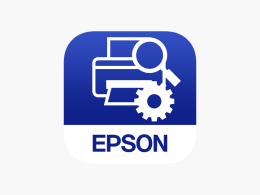Introduction
Managing remote teams is no longer just a trend but a necessity in today’s fast-paced, globalized world. In 2025, remote work continues to grow, and business leaders are increasingly faced with the challenge of leading virtual teams. Whether you’re managing a small startup or a large organization, the best practices for remote team management have evolved and become more sophisticated.
In this article, we’ll explore the key strategies and best practices for managing remote teams in 2025. From communication tools to building team trust, we’ll walk you through the most effective ways to ensure your remote team is not only productive but also engaged and motivated. So, if you’re ready to enhance your remote work management skills and foster a collaborative and efficient work environment, read on!
What Is Remote Team Management?

Remote team management refers to the process of leading a team that works from different locations, often across time zones and geographies. This involves managing tasks, communication, performance, and overall team dynamics without the benefit of physical proximity. It relies heavily on digital tools like video conferencing, chat apps, and shared project boards to keep everyone connected and aligned.
A good remote manager sets clear goals, checks in regularly, and builds trust by encouraging open feedback. They also monitor progress through simple metrics and make time for informal conversations to keep team morale high. By blending structure with flexibility, remote team management turns distance into an opportunity for greater focus and work–life balance.
Why Is Remote Team Management Important in 2025?

The shift to remote work has changed the way businesses operate. The rise of digital platforms, cloud-based tools, and global talent pools has made remote teams an attractive option for many companies. In 2025, remote work is expected to continue growing, with more companies adopting hybrid or fully remote work models and save time. Managing remote teams effectively is crucial for maintaining productivity, engagement, and company culture.
Benefits of Managing Remote Teams Effectively
Managing remote teams comes with several key benefits. First, it allows businesses to access a broader pool of talent, no longer limited by geographic location. This flexibility can help organizations find the best people for the job, regardless of where they live. Additionally, remote work often leads to higher job satisfaction, as employees enjoy the flexibility and work-life balance it offers. It can also reduce overhead costs, as companies no longer need to maintain large office spaces. Proper management of remote teams leads to improved productivity, as employees tend to be more focused and less distracted when working from home or other remote locations.
The Role of Remote Team Management in Business Success

The role of effective remote team management is essential to the success of modern businesses. When teams are well-managed, even from a distance, they can collaborate seamlessly and achieve great results. Communication, trust, and clear goals are critical to managing remote teams successfully. A well-managed remote team can be just as productive, if not more so, than a traditional office team. Effective project management tools ensures that team members stay motivated, aligned with company goals, and work efficiently. By investing in the right tools and practices, businesses can ensure their remote teams operate smoothly and contribute to the overall success of the organization.
Best Practices for Managing Remote Teams in 2025

1. Establish Clear Communication Channels
What is Clear Communication?
Clear communication is the backbone of successful remote team management. Without face-to-face interactions, it’s easy for messages to be misunderstood or missed. Establishing efficient communication channels and protocols ensures that everyone is on the same page.
Why It’s Essential for Remote Teams
Effective communication in a remote setting reduces the likelihood of confusion and increases productivity. It also ensures that everyone feels connected and engaged, which is critical for team morale.
How to Implement Clear Communication:
- Use communication tools like Slack, Microsoft Teams, or Zoom for real-time communication.
- Establish clear expectations regarding response times, especially if your team works across different time zones.
- Use video calls regularly for team meetings to foster a more personal connection.
2. Implement Time Zone Management Tools
What is Time Zone Management?
Time zone management refers to the practice of scheduling and coordinating tasks based on the different time zones of team members. It’s essential to be aware of the time zones your remote workers are in and schedule meetings accordingly.
Why It’s Important for Remote Teams
If you don’t consider time zones, meetings may exclude some team members, causing frustration and diminishing collaboration. Managing time zones helps ensure that all team members feel included and valued.
How to Implement Time Zone Management:
- Use tools like World Time Buddy or Google Calendar to plan meetings at convenient times for everyone.
- Schedule rotating meeting times to accommodate team members in different time zones.
- Record meetings and share summaries for those who can’t attend in real time.
3. Foster Team Collaboration with the Right Tools
What Are Team Collaboration Tools?
Team collaboration tools are software applications designed to help remote teams collaborate, share files, and manage projects efficiently. These tools are essential for organizing work, tracking progress, and enhancing communication.
Why They’re Essential for Remote Teams
Remote teams don’t have the benefit of spontaneous face-to-face conversations. Collaboration tools replace these in-person interactions, enabling seamless teamwork and ensuring that everyone stays on track.
Popular Team Collaboration Tools:
- Trello or Asana for task management and project tracking.
- Google Drive or Dropbox for file sharing and document collaboration.
- Miro or MURAL for brainstorming and virtual whiteboarding.
4. Set Clear Goals and Expectations
What Are Clear Goals and Expectations?
Clear goals and expectations are defined objectives and guidelines that team members need to meet. In remote teams, it’s crucial that everyone understands their responsibilities, deadlines, and the quality of work expected.
Why They’re Important for Remote Teams
Without face-to-face supervision, remote teams can easily drift off course. Setting clear expectations and specific goals helps maintain focus and ensures that all team members are aligned with the company’s objectives.
How to Set Clear Goals and Expectations:
- Set SMART goals (Specific, Measurable, Achievable, Relevant, Time-bound).
- Use weekly check-ins to review progress and address concerns.
- Ensure that team members have access to all necessary resources to succeed.
5. Build and Maintain Trust Within the Team
What is Trust in Remote Teams?
Trust in remote teams refers to the belief that team members are dependable and will complete their tasks without the need for constant supervision. Building trust is particularly challenging in remote teams, but it’s essential for fostering a positive and productive team environment.
Why Trust Matters for Remote Teams
Trust is the foundation of any successful team, and without it, communication, collaboration, and motivation will suffer. When team members trust each other, they are more likely to share ideas, ask for help when needed, and work more effectively as a unit.
How to Build Trust in Remote Teams:
- Encourage transparency by openly sharing progress, challenges, and successes.
- Celebrate achievements and milestones to build a sense of shared success.
- Promote open communication and active listening in meetings.
6. Encourage Work-Life Balance
What is Work-Life Balance in Remote Teams?
Work-life balance refers to the equilibrium between work responsibilities and personal life. Remote teams, especially those working from home, may struggle with boundaries between the two. It’s crucial to encourage your team to balance work with personal time to avoid burnout.
Why Work-Life Balance is Crucial for Remote Teams
Without a clear separation between work and personal life, remote employees may experience fatigue, stress, or burnout, which can affect their productivity and overall health. Promoting work-life balance increases job satisfaction and helps retain talent.
How to Encourage Work-Life Balance:
- Establish work hours and ensure that employees respect their downtime.
- Encourage taking breaks and vacation days to recharge.
- Offer flexible work hours where possible to accommodate personal responsibilities.
Challenges of Managing Remote Teams
While managing remote teams has many advantages, there are also significant challenges. One of the biggest issues is maintaining effective communication. Without face-to-face interaction, team members may feel disconnected, leading to misunderstandings or missed messages. Another challenge is building and maintaining trust. Managers need to ensure that their remote employees stay focused and deliver quality work, even without direct supervision. Time zone differences can also create difficulties in scheduling meetings or coordinating tasks. Additionally, fostering a sense of team culture and collaboration can be harder when employees work remotely. Overcoming these challenges requires thoughtful planning and the right tools to keep everyone connected and motivated.
The Future of Managing Remote Teams in 2025 and Beyond

Looking ahead, managing remote teams will continue to evolve, driven by technology and changing workforce expectations. As technology improves, new tools and platforms will make it easier to collaborate, communicate, and manage remote teams efficiently. In the future, we may see more businesses adopting hybrid work models, combining remote and in-office work to provide more flexibility. Companies will also place more emphasis on employee well-being and mental health, as remote work can sometimes lead to feelings of isolation. In 2025 and beyond, remote team management will focus on balancing flexibility with productivity, ensuring teams stay connected, engaged, and successful in a digital-first world.
Comparative Table: Key Practices for Managing Remote Teams
| Practice | Why It’s Important | How to Implement It |
|---|---|---|
| Clear Communication Channels | Ensures alignment and minimizes misunderstandings | Use Slack, Zoom, and regular video calls. |
| Time Zone Management | Avoids missed meetings and inclusion issues | Use tools like World Time Buddy to schedule meetings. |
| Team Collaboration Tools | Enables seamless teamwork and project management | Use tools like Trello, Asana, and Google Drive. |
| Clear Goals and Expectations | Keeps the team aligned and on track | Set SMART goals and have regular check-ins. |
| Trust Building | Encourages open communication and collaboration | Foster transparency, celebrate achievements, and listen actively. |
| Work-Life Balance | Prevents burnout and improves job satisfaction | Set clear work hours and encourage time off. |
Conclusion
Managing remote teams in 2025 presents unique challenges, but with the right practices, it can also be a rewarding experience. By establishing clear communication channels, setting realistic expectations, utilizing the right collaboration tools, and fostering trust and work-life balance, you can lead your remote team to success. These best practices not only increase productivity but also enhance team morale, creating a positive and efficient work environment.
Call to Action
Are you ready to take your remote team management skills to the next level? Start implementing these best practices today and see how they can transform your team’s productivity and collaboration. Visit our website for more tips on effective remote team management in 2025!












